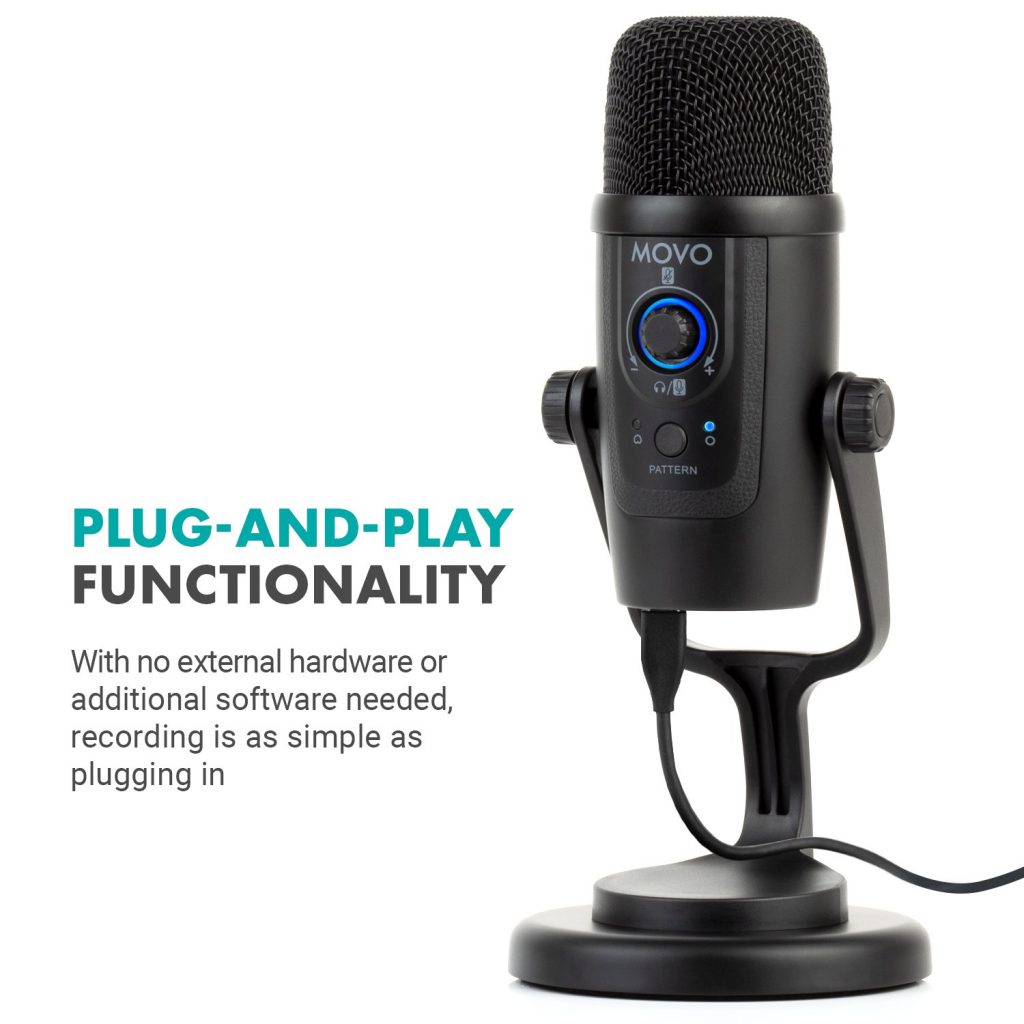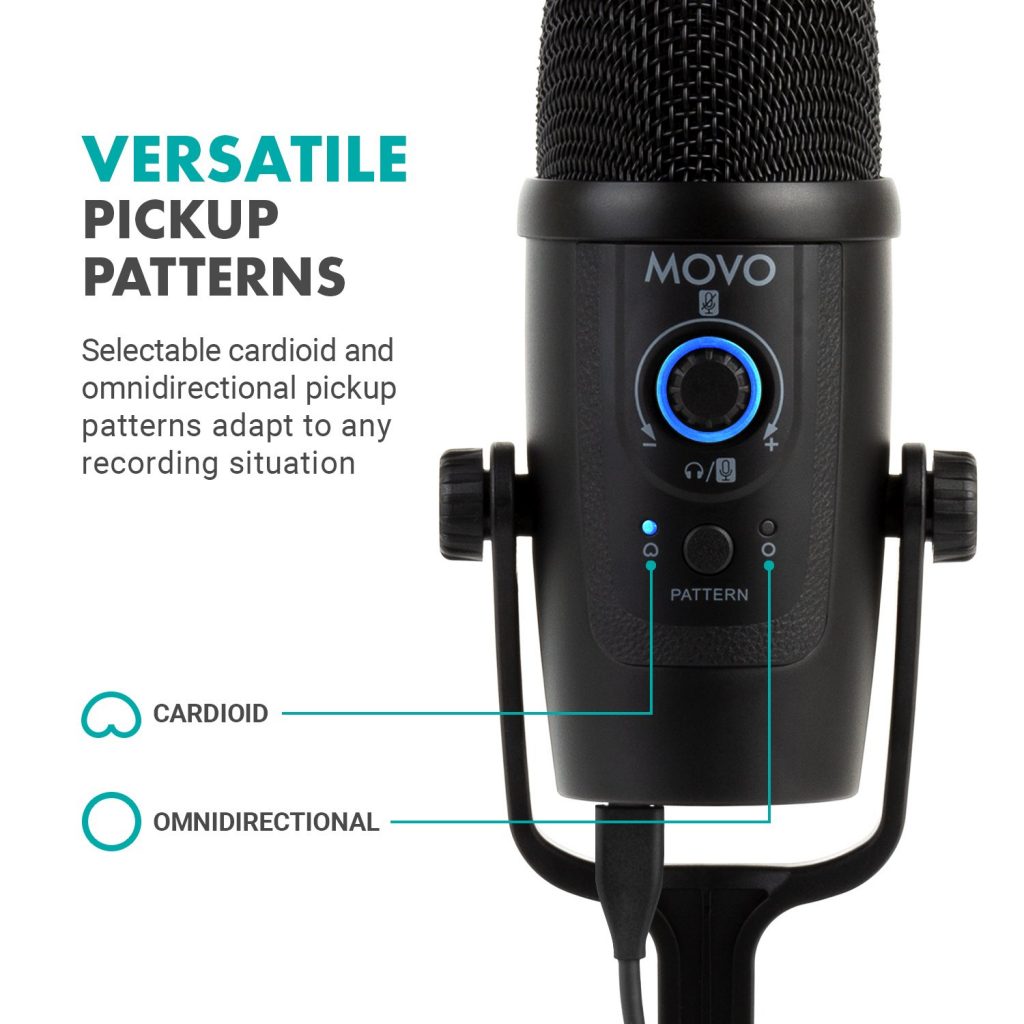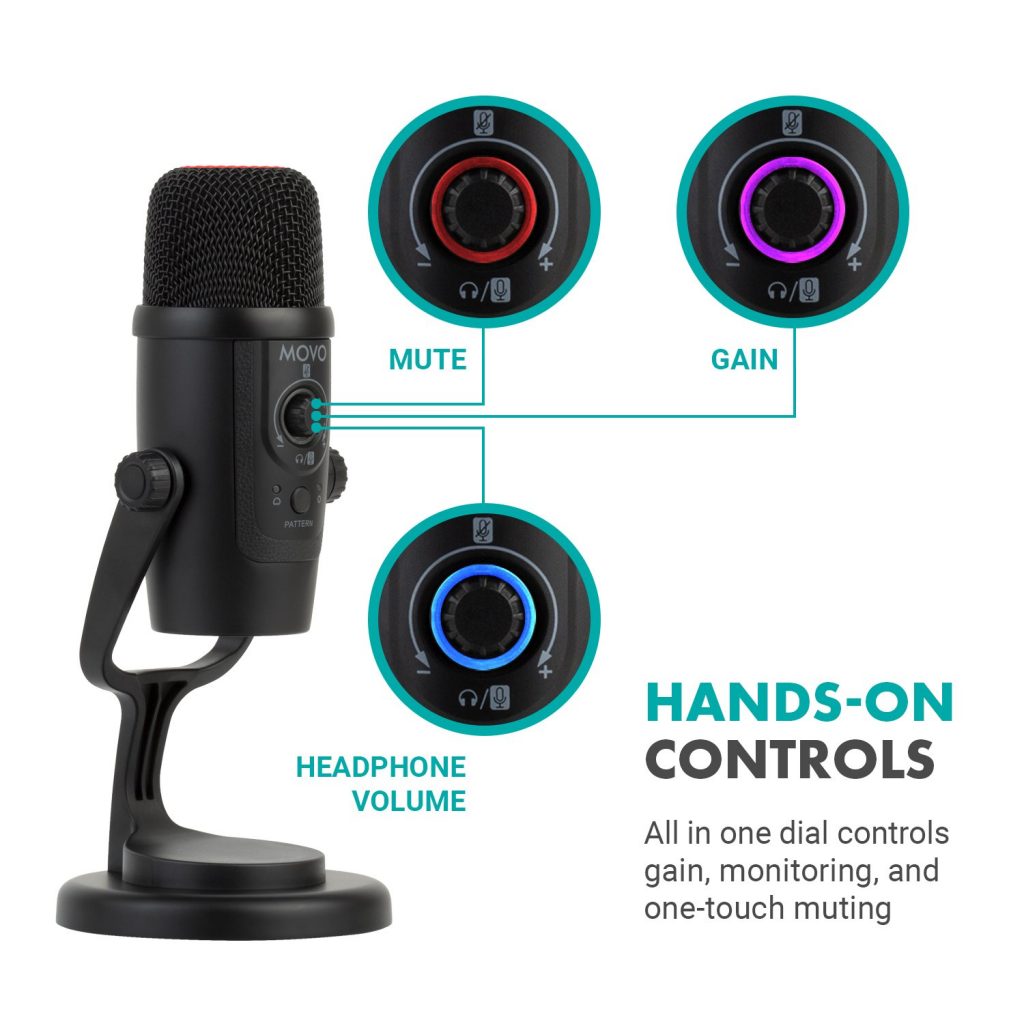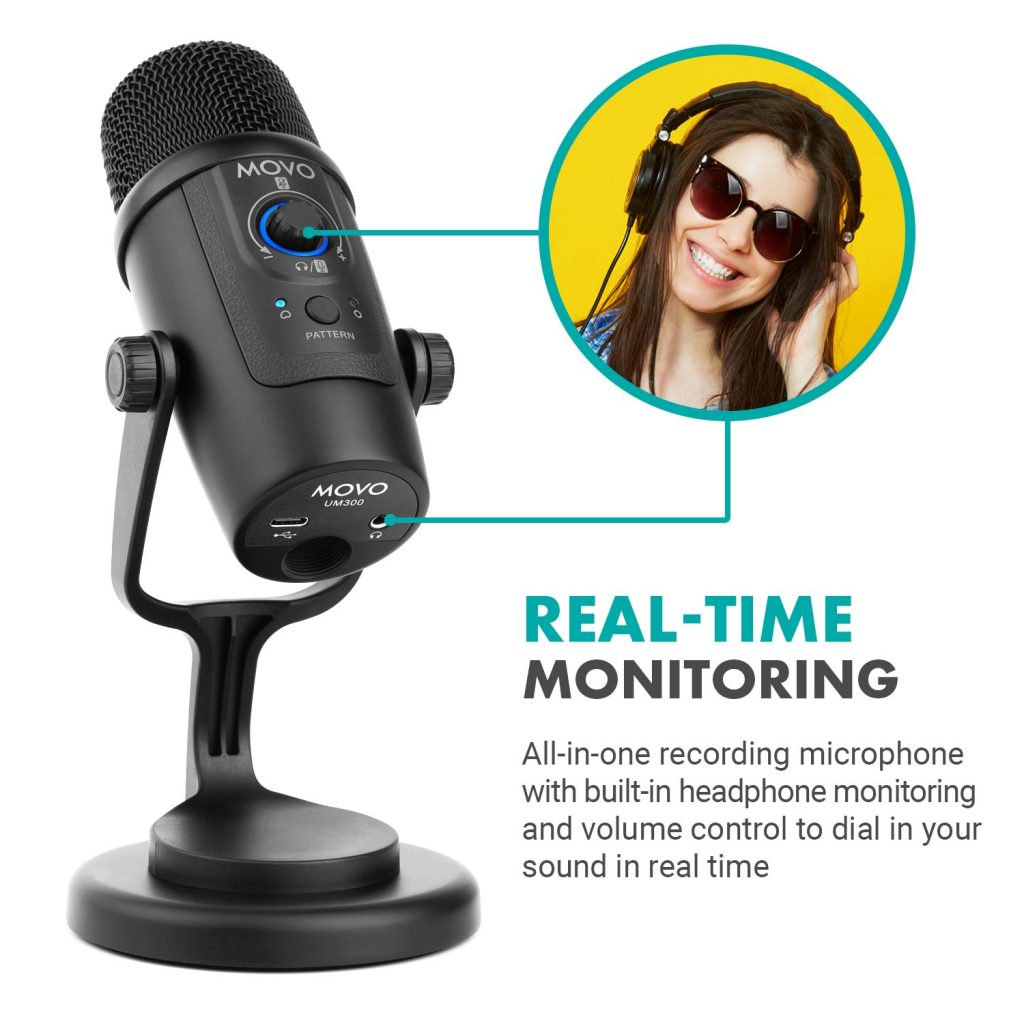COVID-19 has continued to change what we consider normal. Jobs are cutting back, people are working from home and many are pursuing their dreams . I’ve seen this in a variety of areas. People want to finally build that YouTube channel, show their skills on Twitch or meet with their friends for a weekly podcast. Like most things, there are a lot of challenges. You need content, ideas, support and, in many cases, equipment.
When it comes to this field, Blue’s Yeti microphone is so synonymous with the concept that some people might not realize Blue is the company and Yeti is their product. While there is no denying they’re well known for a reason, as is HyperX’s QuadCast line of microphones, no one wants to over purchase. This was Movo’s thought when they came up with UM300, a low cost microphone intended to give a lot of bang for the buck. Having used it a bit, is it a good alternative or is it an expensive mid-step?
As I’ve noted before, I appreciate Movo’s clean packaging. UM300 has a simple design that shows the product, notes it works with Android USB type-C devices and computers. The back talks about Movo’s mission, with a simple explanation of what is inside the box and how to activate their welcome 2-year warranty.

Inside is an ample amount of foam to hold UM300 in place. Despite being a small part of the process, the foam really highlights how Movo see’s their products. They want to make a statement, different than the Styrofoam and plastic you typically see. Under the cover is UM300, a USB-A to USB-C, USB-C to USB-C and a small manual.
Taking UM300 out can be a bit surprising, given the weight of the base. It’s a very sturdy unit that is largely constructed of metal, like the microphone itself. Unlike a lot of similar microphones, Movo sacrificed a sleek look for a more functional one.

On units like QuadCast or Yeti, polar pattern are on the back. This makes changing it rather difficult, especially in Yeti’s case, as gain is located on the back. QuadCast resolves this by making the top mute and bottom gain, though UM300 makes it simple by putting everything in front.
Even though there are only two buttons on UM300, a volume knob and pattern button, they’re surprisingly effective. Initially UM300 will have a blue ring around volume. This indicates you’re either increasing or decreasing headphone volume. Holding the button for about five seconds turns it purple. This is how you toggle gain, something I strongly suggest immediately changing. Pushing the button normally will turn the ring red, which mutes the mic. Finally, pattern is a simple button push. It starts on cardioid, commonly used for podcasts and voice overs, but also includes omnidirectional.

Before getting into capture quality, the choice of these two polar patterns shows a good middle ground for an entry level microphone. Similar products, like SoloCast, tend to stick with cardioid due to it being the most common application. UM300 and its direct competitor Blue’s Snowball, include omni, making it perfect for recording a meeting or just walking around a room without losing details.
As for performance, it’s a shockingly powerful microphone. Initially it comes at max gain, or at least close to it, which is why I mentioned turning it down immediately. To give you an idea of how powerful this is, I could hear the scratching of my fingers running against the Sony symbols on the back of a DualSense, the sound of my foot caressing the carpet four feet away or simply the light rustle of my nail against fabric. While it’s nice to have that potential, it can get annoying if you have mic monitoring on or, more importantly, bother anyone listening to you.

Upon finding a more reasonable level, I was pretty impressed with what UM300 had to offer. Not only did it instantly work with PlayStation 5, the voice quality was notably crisper than similar offerings. Just running it against my SoloCast I found it had less of an echo, making it slightly better for capturing my voice. It was also sufficiently clear, not quite at the level of VSM-7, but considerably less set up and effort.
Unfortunately, one downside is that I couldn’t decrease the gain past a certain limit. As a result, certain sounds, like my chair squeaking or my keyboard clicking are still captured. How much of a problem this presents will vary but it is important to consider.
Also, depending on your use case or desired features, UM300 might not be the best option. One thing that made the SoloCast stand out is the arm rotates 180 degrees. This makes it a lot easier to work in certain set ups or situations. Also, due to UM300 featuring a headphone in, using a non-wired headset with it can be slightly cumbersome. This is a limitation I did not have with SoloCast, so keep that in mind.
Movo UM300 Review Verdict
For the money, it’s hard to beat UM300. It’s a nice product that has good construction, supports a mic arm, has great button placement, all while providing excellent capture quality. It will be a great addition to someone looking to up their set up, especially on consoles.
[Editor’s Note: Movo UM300 was provided to us for review purposes.]
